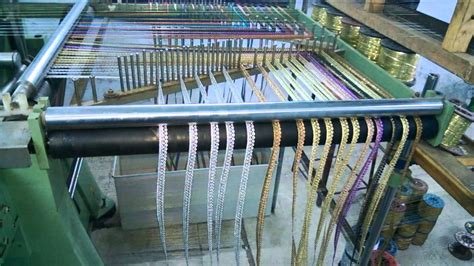Introduction
The Indian lace industry, a pivotal sector of the textile industry, has emerged as a global powerhouse, contributing significantly to the country’s economic growth. With its rich heritage in textile craftsmanship, India produces a diverse range of intricate and exquisite lace designs, catering to a vast domestic and international market.

Lace Manufacturing in India: An Overview
The Indian lace manufacturing industry encompasses a multitude of small-scale and large-scale units spread across various parts of the country, including Surat (Gujarat), Jaipur (Rajasthan), Panipat (Haryana), and Nagercoil (Tamil Nadu). These manufacturers employ skilled artisans and utilize cutting-edge technology to produce high-quality lace products.
Production Volume and Exports
According to the Textiles Ministry of India, the country’s lace production stood at 250 million meters in 2019-20, with a projected growth rate of 5-7% annually. Of this production, over 50% is exported to countries such as the United States, the United Kingdom, France, Germany, and Japan.
Types of Lace Manufactured in India
Indian lace manufacturers produce a wide variety of lace types, ranging from traditional hand-crafted designs to modern machine-made varieties.
Hand-Crafted Lace
Artisans in India use traditional techniques such as needlepoint, bobbin lace, and crochet to create intricate hand-crafted lace. These designs are highly prized for their unique patterns and delicate workmanship.
Machine-Made Lace
Modern lace manufacturers use sophisticated machinery like shuttle embroidery, Leavers lace machines, and Raschel machines to produce machine-made lace. These laces are characterized by their precision, uniformity, and high production capacity.
Applications of Lace
Lace has a myriad of applications across various industries, including:
- Fashion and Apparel: Lace is used in the creation of garments, lingerie, and accessories like scarves, gloves, and handkerchiefs.
- Home Furnishings: Lace curtains, tablecloths, bedspreads, and cushion covers add a touch of elegance to interior décor.
- Decorative Products: Lace finds its way into craft items, wedding decorations, invitations, and packaging.
- Industrial Applications: Certain types of lace are used in technical applications such as filters, medical dressings, and electrical insulation.
Innovative Applications: Laceceuticals
A novel application of lace has emerged in the field of medicine with the development of laceceuticals. Laceceuticals are lace structures engineered with specific biocompatible materials to enhance drug delivery and tissue regeneration. They hold promise in treating various diseases and injuries.
Strategies for Success in the Lace Manufacturing Industry
To thrive in the competitive global lace market, Indian manufacturers adopt effective strategies:
- Focus on Design and Innovation: Lace manufacturers continuously innovate and develop new designs to meet evolving customer preferences.
- Cost Optimization: Efficient production processes, strategic sourcing, and lean manufacturing practices help reduce production costs.
- Quality Assurance: Strict adherence to quality standards and rigorous testing ensure the production of superior lace products.
- Building Strong Relationships: Collaboration with designers, buyers, and suppliers fosters long-term partnerships and market opportunities.
- Embracing Technology: Manufacturers invest in advanced machinery and automation to streamline production and enhance product quality.
Common Mistakes to Avoid
To avoid pitfalls, lace manufacturers should be mindful of common mistakes:
- Lack of Market Research: Inadequate understanding of market trends can lead to outdated or uncompetitive products.
- Neglecting Customer Feedback: Ignoring customer feedback can result in missed opportunities for improvement and customer satisfaction.
- Overreliance on Manual Labor: Excessive dependency on manual labor can hinder productivity and scalability.
- Compromising on Quality: Cutting corners on production costs can tarnish reputation and damage customer loyalty.
- Limited Marketing and Distribution: Weak marketing and distribution strategies can restrict market reach and sales potential.
How to Step-by-Step Approach to Lace Manufacturing
The process of lace manufacturing involves several key steps:
- Design Creation: Designers create original lace patterns using software or traditional techniques.
- Machine Setup: The appropriate lace machine is selected and configured according to the design specifications.
- Thread Preparation: Threads are prepared and loaded onto the machine’s bobbins and needles.
- Lace Production: The lace machine weaves the threads together following the programmed design.
- Finishing Processes: The finished lace undergoes finishing treatments like dyeing, bleaching, and starching to enhance its aesthetic and functional properties.
- Quality Inspection: Products are thoroughly inspected to ensure quality before being packaged for shipment.
Tables of Lace Manufacturers and Market Data
Table 1: Leading Lace Manufacturers in India
| Manufacturer | Location | Specialty |
|---|---|---|
| Alok Industries | Surat, Gujarat | Hand-crafted needlepoint lace |
| Shambhavi Lace Pvt. Ltd. | Jaipur, Rajasthan | Machine-made Leavers lace |
| Jain Lace House | Panipat, Haryana | Embroidered lace and fabrics |
| Nagercoil Lace Industries | Nagercoil, Tamil Nadu | Bobbin lace and crochet lace |
| Gemini Lace Pvt. Ltd. | Mumbai, Maharashtra | Powerloom lace and accessories |
Table 2: Production and Export Figures
| Year | Production (Million Meters) | Exports (Value in Million USD) |
|---|---|---|
| 2016-17 | 200 | 250 |
| 2017-18 | 220 | 300 |
| 2018-19 | 240 | 350 |
| 2019-20 | 250 | 400 |
| 2020-21 (Estimated) | 260 | 450 |
Table 3: Applications and Market Size
| Application | Market Size (in Billion USD) |
|---|---|
| Fashion and Apparel | 50 |
| Home Furnishings | 25 |
| Decorative Products | 10 |
| Industrial Applications | 5 |
| Laceceuticals | 2 (Projected) |
Table 4: Export Destinations
| Destination | Value of Exports (in Million USD) |
|---|---|
| United States | 100 |
| United Kingdom | 50 |
| France | 40 |
| Germany | 30 |
| Japan | 20 |
